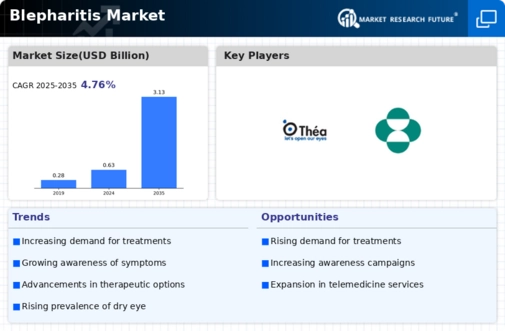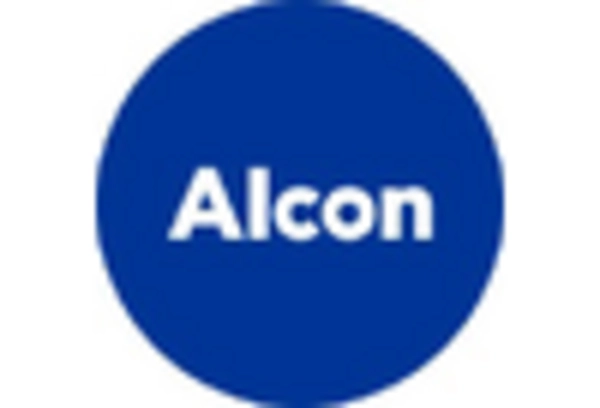Growing Geriatric Population
The increasing geriatric population is a critical factor driving the Blepharitis Market. Older adults are more susceptible to various ocular conditions, including blepharitis, due to age-related changes in eyelid structure and function. According to demographic data, the population aged 65 and older is projected to double by 2050, leading to a higher incidence of blepharitis among this demographic. This trend is expected to create a substantial market for blepharitis treatments, as older individuals often seek medical attention for eye-related issues. Consequently, the Blepharitis Market is poised for growth as healthcare systems adapt to meet the needs of this expanding patient population.
Rising Demand for Eye Care Products
The escalating demand for eye care products is a significant driver in the Blepharitis Market. Consumers are increasingly prioritizing eye health, leading to a surge in the use of over-the-counter treatments and hygiene products specifically designed for blepharitis management. Market analysis indicates that the segment for eyelid scrubs and cleansing wipes is experiencing rapid growth, as these products are perceived as essential for maintaining eyelid hygiene. This trend is further supported by the increasing availability of these products in retail and online platforms, making them more accessible to consumers. As awareness of blepharitis grows, the Blepharitis Market is likely to benefit from this heightened demand for effective eye care solutions.
Advancements in Treatment Modalities
Innovations in treatment modalities are significantly influencing the Blepharitis Market. The introduction of novel therapies, including anti-inflammatory medications, antibiotic ointments, and advanced eyelid hygiene products, has transformed the management of blepharitis. For instance, the development of liposomal formulations and warm compress devices has shown promise in alleviating symptoms and improving patient outcomes. Market data suggests that the segment for prescription treatments is expected to witness substantial growth, driven by these advancements. As healthcare professionals adopt these new therapies, the Blepharitis Market is likely to experience an uptick in demand, reflecting the need for more effective and patient-friendly treatment options.
Increasing Prevalence of Blepharitis
The rising incidence of blepharitis is a notable driver in the Blepharitis Market. Studies indicate that approximately 30% of the population experiences some form of blepharitis, which is often linked to conditions such as seborrheic dermatitis and staphylococcal infections. This increasing prevalence necessitates a growing demand for effective treatment options, thereby propelling the market forward. As awareness of this condition expands, healthcare providers are more likely to diagnose and treat blepharitis, further contributing to market growth. The Blepharitis Market is thus positioned to benefit from this trend, as more patients seek relief from symptoms such as irritation, redness, and crusting of the eyelids.
Integration of Telemedicine in Eye Care
The integration of telemedicine into eye care services is emerging as a transformative driver in the Blepharitis Market. Telehealth platforms enable patients to consult with eye care professionals remotely, facilitating timely diagnosis and management of blepharitis. This shift towards digital health solutions is particularly beneficial for individuals in remote or underserved areas, where access to specialized care may be limited. Market data suggests that telemedicine adoption in ophthalmology is on the rise, with many practitioners incorporating virtual consultations into their practices. As telemedicine continues to evolve, the Blepharitis Market is likely to see increased patient engagement and adherence to treatment regimens, ultimately enhancing market growth.









Leave a Comment